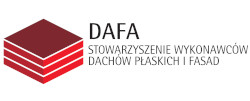Open Access (Artykuł w pliku PDF)
Materiały termoizolacyjne – podatność na przechodzenie w proces ciągłego tlenia
PhD Eng. Katarzyna Kaczorek-Chrobak, Building Research Institute, Fire Research Department
ORCID: 0000-0002-0406-6598
PhD Eng. Andrzej Kolbrecki
PhD Eng. Monika Kuźnia, AGH University of Science and Technology, Faculty of Metals Engineering and Industrial Computer Science
Corespondence address: Ten adres pocztowy jest chroniony przed spamowaniem. Aby go zobaczyć, konieczne jest włączenie w przeglądarce obsługi JavaScript.
DOI: 10.15199/33.2022.12.01
Case study
Abstract. Continuous smouldering process of thermal insulation materials is a significant issue of fire safety of buildings. Fourteen different materials were tested. The minimum temperature of 250°C at the fourth thermocouple (400 mm above the ignition source) was adopted as a criterion of smouldering. Based on the test results, it was concluded that glass wool and cement-bonded particle boards showed a tendency to self-heat, and the loose paper fibres and fibreboards are prone to self-heating and continuous smouldering.
Keywords: smouldering behaviour; thermal insulation materials; fire properties; fire safety of buildings.
Streszczenie. Podatność na ciągłe tlenie materiałów termoizolacyjnych jest istotnym czynnikiem bezpieczeństwa pożarowego budynków. Zbadano czternaście różnych materiałów. Jako kryterium występowania tlenia przyjęto minimalną temperaturę 250°C na czwartej termoparze (400 mm od źródła ognia). Na podstawie wyników badań stwierdzono, że wełna szklana i płyty włóknisto-cementowe wykazują tendencję do samonagrzewania się, a podatność na tlenie i samonagrzewanie się wykazują luźne włókna celulozowe i płyty z włókien drzewnych.
Słowa kluczowe: proces tlenia; materiały termoizolacyjne; właściwości ogniowe; bezpieczeństwo pożarowe budynków.
References
[1] Purser DA. Performance of Fire Retardants in Relation to Toxicity, Toxic Hazard and Risk in Fires. Chapter 12 in Fire Retardant Materials, Edited by A.R. Horrock and D. Price, CRC Press/ Woodhead Publishing, Cambridge, UK. 2001: 449-499.
[2] Kaczorek-Chrobak K. Electric cables used in buildings – dependency of fire properties on constructional and material parameters. Doctor of Philosophy Thesis, Instytut Techniki Budowlanej, Warsaw, Poland, 2020.
[3] Rein G. Smoldering Combustion, Chapter 19 in: SFPE Handbook of Fire Protection Engineering, 5th Edition, Springer, 2016: 581-603; http://link.springer.com/chapter/10.1007/978- 1-4939-2565-0_19.
[4] Fangrat J. Is Flameless Combustion of Importance to Fire Safety? Archivum Combustionis, 2004; 24(1-2): 79-92.
[5] Rein G. Smouldering Combustion Phenomena in Science and Technology, International Review of Chemical Engineering (I.RE.CH.E.). January 2009; 1(1).
[6] Ohlemiller TJ. „Smoldering Combustion” SFPE Handbook of Fire Protection Engineering 2nd Edition Chapter 11 section 2 pages 171-179.
[7] Gray B. Spontaneous Combustion and Self-Heating. SFPE Handbook of Fire Protection Engineering, Massachusetts. 2002; 3: 211-228.
[8] Kolbrecki A, Kaczorek-Chrobak K, Gwiżdż T. Badania i ocena izolacji celulozowych i drewnopochodnych w zakresie przechodzenia w proces ciągłego tlenia. Materiały Budowlane, 2018; 7: 14-16. DOI: 10.15199/33.2018.07.04 (in Polish).
[9] EN 13501-1:2019 Fire classification of construction products and building elements – Part 1: Classification using data from reaction to fire tests, CEN, Brussels, Belgium.
[10] Stec AA, Hull TR. Assessment of the fire toxicity of building insulation materials, Energy and Buildings. 2011; 43(2-3): 498-506, DOI:10.1016/j.enbuild.2010.10.015.
[11] Leppanen P, Malaska M. Experimental Study on the Smouldering Combustion of Mineral Wool Insulation in Chimney Penetrations. Fire Technology. 2019; 55: 2171-2194; https://doi. org/10.1007/s10694-019-00849-1.
[12] Küppers J, Zehfuß J, Steeger F, Kampmeier B. Fire safety of ETICS with wood fibreboards for multi-storey buildings – first research and development results. MATEC Web of Conferences 46, 05007 (2016), DOI:10.1051/matecconf/ 20164605007.
[13] Guindos P, Auad G, Kolb T. Theoretical Model for further Development of Intumescent Substances to Remediate Smoldering in Wood Fiber Iinsulation Panels, Maderas. Ciencia y tecnología, 2021 (23): 51, 1-22, DOI:10.4067/ s0718-221x2021000100451.
[14] Steen-Hansen A, Mikalsen RF, Jensen UE. Smouldering Combustion in Loose-Fill Wood Fibre Thermal Insulation: An Experimental Study. Fire Technology. 2018; 54: 1585-1608.
[15] Kurama H. Fire Retardant Efficiency of Waste Magnesia Powder in Cellulose Insulation. Journal of the Australian Ceramic Society. 2016; 52(2): 14-149.
[16] Rozporządzenie Ministra Spraw Wewnętrznych i Administracji z 7 czerwca 2010 r. w sprawie ochrony przeciwpożarowej budynków, innych obiektów budowlanych i terenów (Dz.U. nr 109, poz. 719) (in Polish).
[17] EN 16733:2016 Reaction to fire tests for building products – Determination of a building product’s propensity to undergo continuous smouldering.
Przyjęto do druku: 8.11.2022
Materiały Budowlane 12/2022, strona 1-5 (spis treści >>)





























